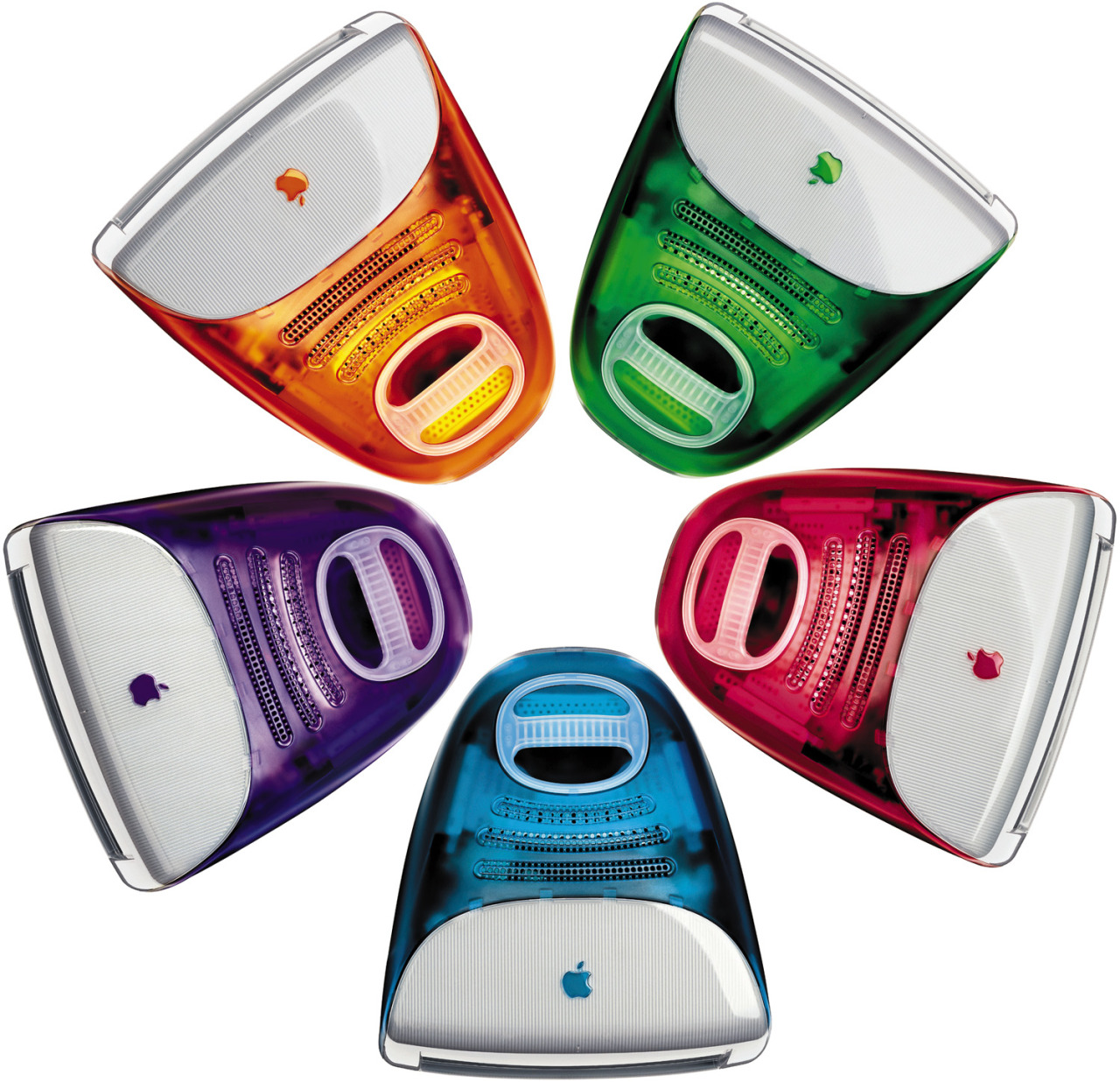The Y2K Movement: Its History and Resurgence
With the revival of the 70s, 80s and 90s it seemed inevitable that the trends of the 2000s would see their own resurgence. Most commonly known for horrendous combinations such as Uggs with miniskirts and jeans under dresses, the 2000s was a decade no one wanted to see come back, but against all odds, it did. However, the revitalization of the early 21st century includes more than the velour Juicy jackets or strap-y kitten heels its remembered for. It also means a reappearance of Y2K fashion.
Y2K, an abbreviation for year 2000, is a zeitgeist of the late 90s and early 2000s with its peak years being 1993 to 2003. With the rise of technology and the dot-com boom, the Y2K aesthetic embodied concepts of utopias where technology solved all problems, but also the panic that arose from the future (think the Matrix). It drew inspiration from the rise of the internet and the seemingly endless possibilities of the tech world. Characteristics that categorized the look included blob-like forms, translucency and iridescence—traits that can be seen in fashion today.
In terms of clothing, Y2K pieces included mesh tops, satin and leather skirts, metallic tops and sparkling shoes. Drawing inspiration from the newly created CD, iridescent fabrics and accessories that emulated the disc’s rainbow sheen became popular.
An iconic moment for the aesthetic would be Christian Dior’s fall 1999 couture show where shiny vinyl and sharp forms prevailed. According to John Galliano, the head designer, he was “deeply inspired by The Matrix” and as a result constructed “dresses [that] are evil, evil.”
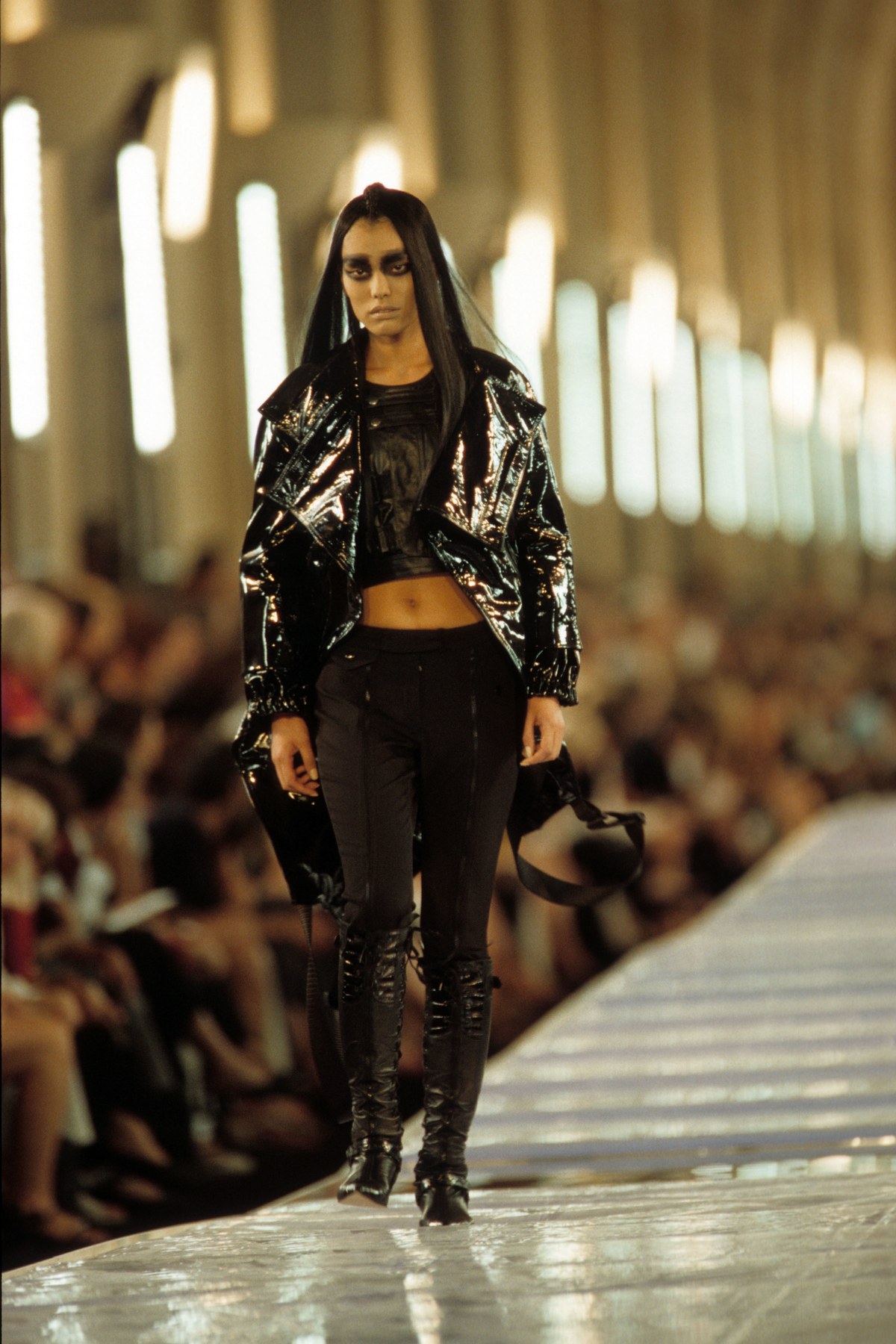
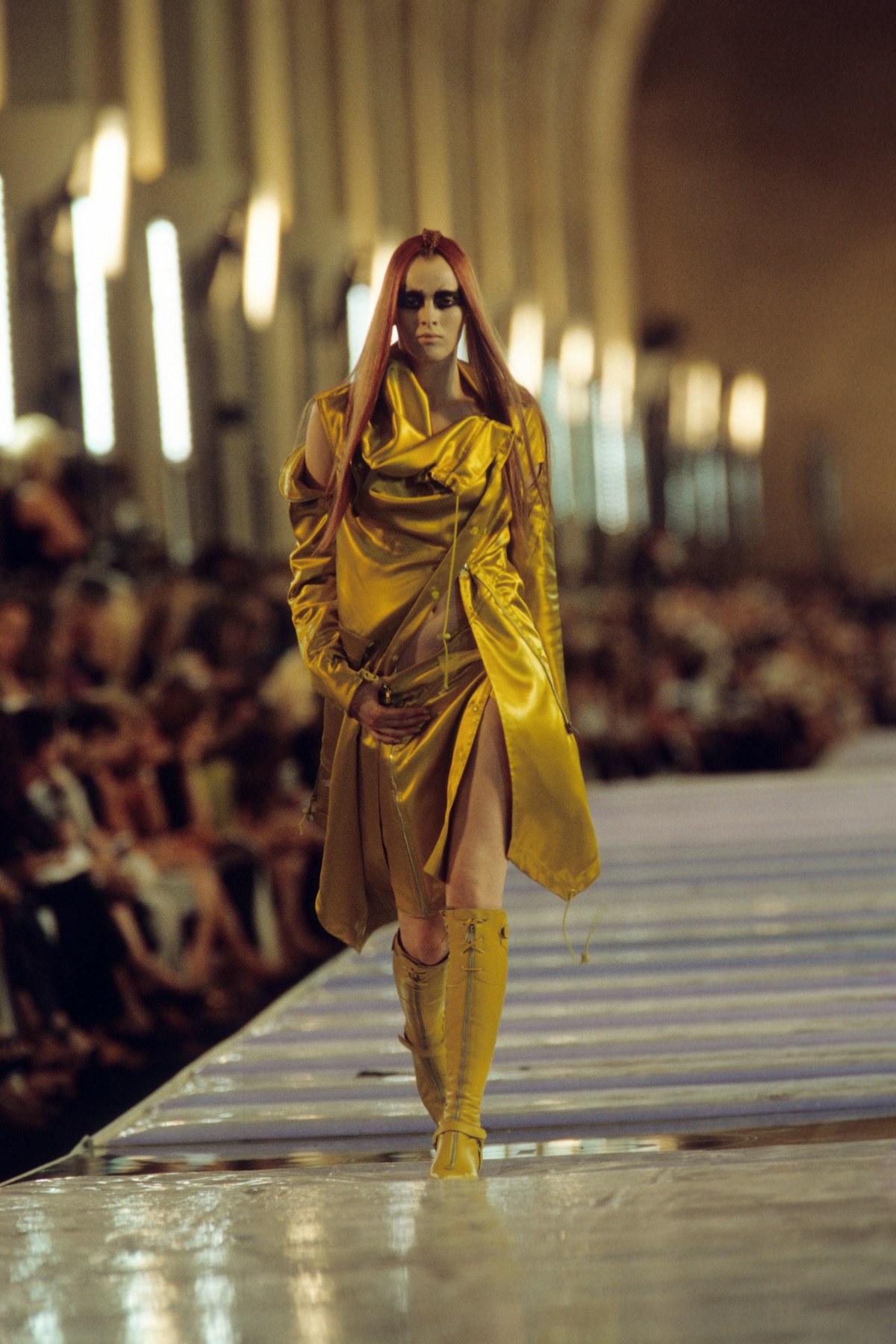
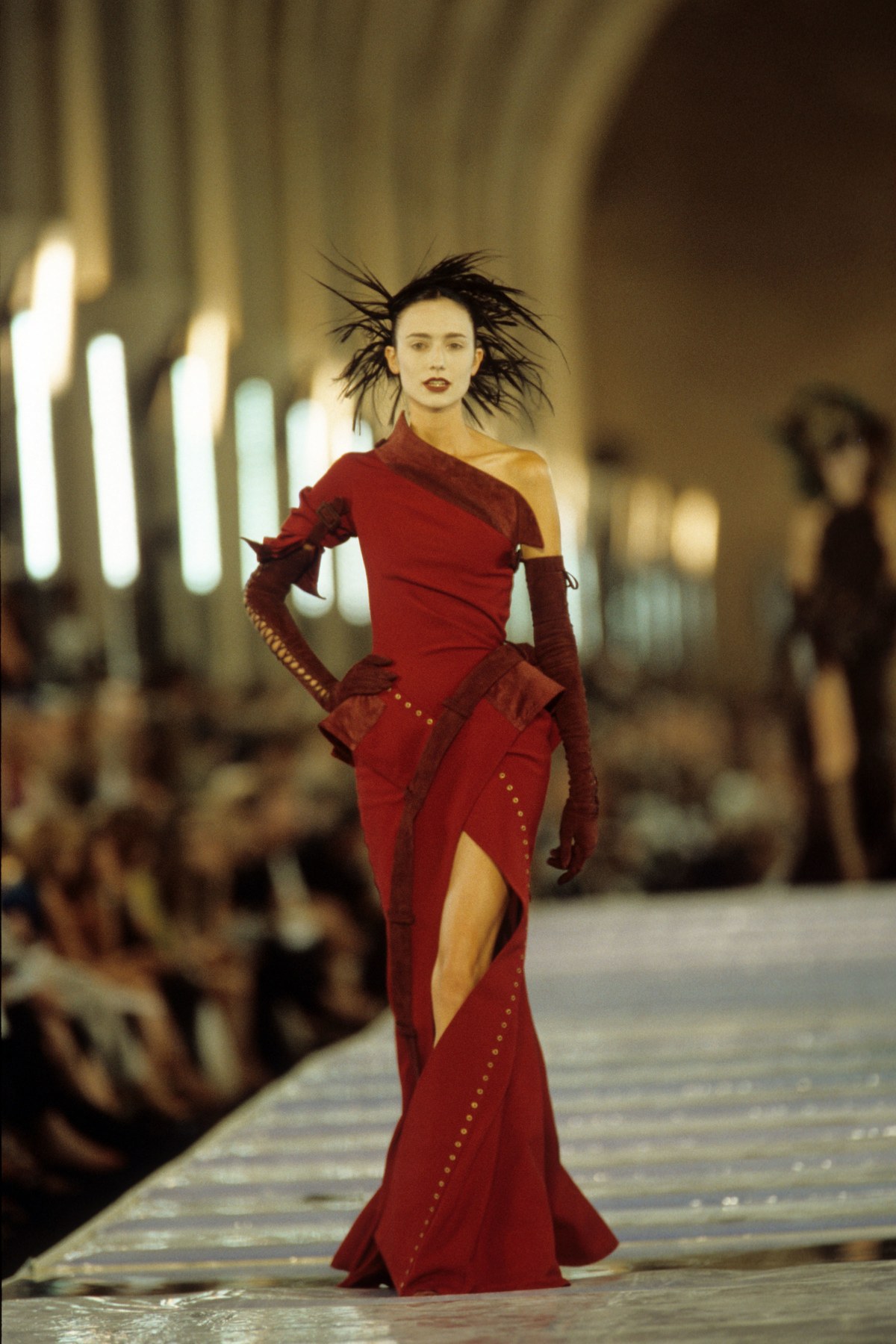

Even Miu Miu featured aspects of Y2K in its Spring/Summer show of 1996. Models wore translucent dresses and skirts. The shapes were simple, featuring what appears to be Velcro straps, speaking to function and utility.

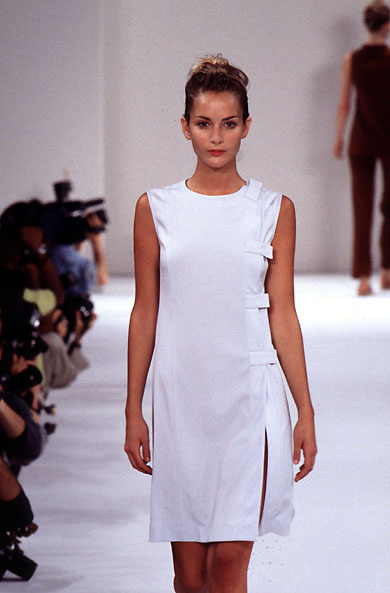
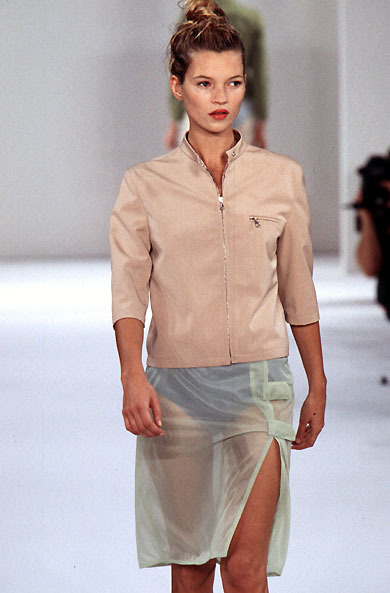
Another designer to embody the Y2K era would be Walter Van Beirendonck, the creator for W<, whose Summer 1996 show featured neon colors and large, translucent sunglasses in an array of bright colors. The models wore eccentric wigs in yellow and green as well as tight clothing made of spandex.
His summer 1999 collection was revealed through video featuring the rhythmic sounds of drum and bass, a genre of electronic music. The models appeared to be aliens and once again, shiny materials featured neon colors. However, the movement was short-lived in fashion.
“Fashion moves so quickly. It seems like the fashion world grew tired of the Y2K clothing as early as 2000,” explained Evan Collins, the 28-year-old founder of the Y2K Aesthetic, a Facebook page created in December 2014 meant to archive the movement. “Many of the moments that seem to embody Y2K have been forgotten.”
He cited the release of Skim.Com’s clothing line which launched with an immense ad campaign in 2000, before collapsing less than a year later. The clothes were printed with visible six digit numbers that doubled as the wearers email address (digits 456456 could be emailed at 456456@skim.com). Once again, the clothing featured sleek designs that spoke to utility such as this cross body bag.
Remind you of the current fanny pack trend?
However, the aesthetic infiltrated culture beyond fashion. Its explorations delved into architecture, graphic design, as well as music and music videos. One of the most iconic moments of the entire movement was the release of the iMac G3 in 1998 which featured a “blob” form and translucent, candy-colored material. Other “blobjects” include the fluid and futuristic furniture of Karim Rashid.
Karim Rashid
Aura Table (1990)
Apple iMac G3
Flower Ad (1998)
As for music, the 90s and 2000s saw a rise in the computer generated sounds of electronic music and pop. Electronica artist, Björk, released two albums, Post (1995) and Homogenic (1997), that featured ethereal artwork and eerie sounds. Daft Punk, one of, if not the, most famous electronic music duo released their influential album Discovery in 2001. The music videos for each song featured computer generated alien band members performing in outer space; the expansion of computer design technologies to create virtual characters was another influence on the Y2K aesthetic.
As for how Y2K can be seen today we can glimpse its influence in our music, fashion, and accessories. The Met Gala 2016 theme was “Manus x Machina: Fashion in the Age of Technology” which paved the way for metallic and mesh clothing items to hit the mainstream. Not to mention the consistent rise in popularity of electronic music; It has shaped pop artists of our generation like Taylor Swift with her release of Reputation, a dark, electro-inspired album. Even Matrix-like sunglasses are making a comeback.
But what does the revival of Y2K say about our current culture? I think we have to look no further than the political and technological atmosphere of our time.
“We are seeing that neo-Y2K is playing a part in queer space, as marginalized people want to hope for a better future,” says Froyo Tam, a 21-year-old transdisciplinary designer who is an administrator for the Y2K aesthetic Facebook page. “As a queer woman I have always been attracted to the organic, blob-like forms of the movement that suggest fluidity.”
With the discrimination and suppression of minority groups that came along with the election of President Trump, the youth of 2018 are pushing back with fierce activism. The hope for a better future was a catalyst for the futuristic designs of Y2K, making the aesthetic applicable today. Not to mention the uncertainty of humanity with the inevitable issue of climate change on the horizon- an issue many are relying on technology to save us from. Even the rise of artificial intelligence and smart phone advancements has defined our culture with the onset of social media and companions such as Alexa and Siri. No wonder the translucency and utopian themes of Y2K has found an appeal in society today.



